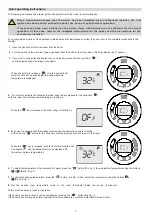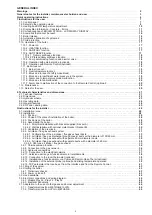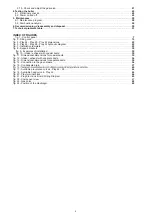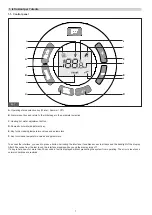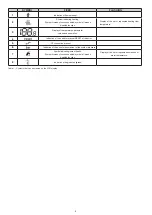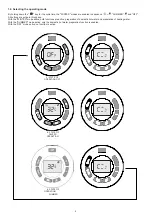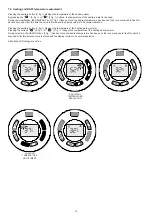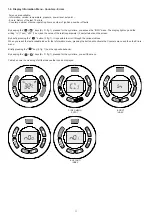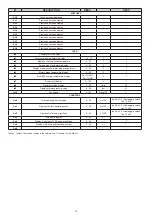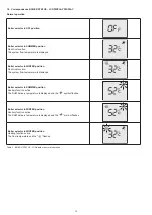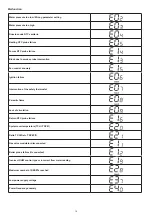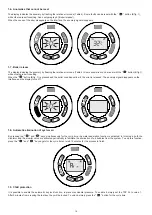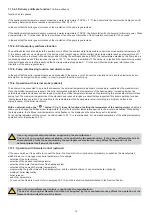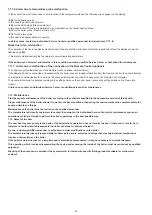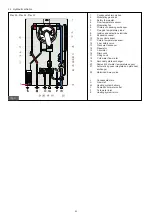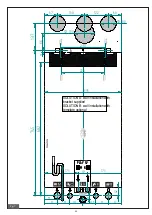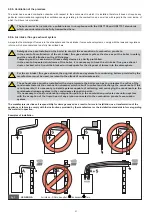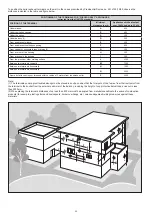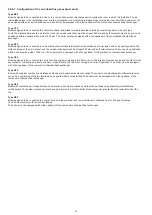
18
1.10.4.1.
Delivery antifreeze function
The flow antifreeze
function has two phases:
If the heating water temperature sensor measures a water temperature <TSP 38 + 2 °C, the boiler starts the circulators and stays on until
the heating water temperature reaches a temperature> TSP 38 + 5 °C .
In the event that the boiler goes into lockout, the circulation of the pump is guaranteed.
If the heating water temperature sensor measures a water temperature <TSP 38, the boiler starts with the burner at minimum power. When
a temperature> 42 ° C is reached, the burner switches off and the post-circulation of the circulators continues for 150 seconds.
In the event that the boiler goes into lockout, the circulation of the pump is guaranteed.
1.10.4.2.
Plate sanitary antifreeze function
The antifreeze function also protects the sanitary circuit. When the sanitary water temperature sensor measures a water temperature of 5 °
C, the boiler switches on and stays on at the minimum heat output value until the sanitary water temperature reaches a temperature of 7 °
C ( the diverter valve is placed in the sanitary position).During the antifreeze phase in DHW, the temperature detected by the flow probe is
continuously checked and if this reaches the value of 42 ° C, the burner is switched off. The burner is re-ignited if the request for operation
in the anti-freeze phase is still present and the flow temperature drops below 5 ° C.In the event that the boiler goes into lockout, the
circulation of the pump is guaranteed.
1.10.5.
Pump anti-blocking function and diverter valve
In the event that the boiler remains inactive and connected to the mains, every 24 hours the circulation pump and the diverter valve are
activated for a short period (30 seconds), in order to prevent them from locking up.
1.10.6.
Operation with external probe (optional)
The boiler can be connected to a probe that measures the external temperature (optional not mandatory, supplied by the manufacturer).
Once the outside temperature is known, the boiler automatically adjusts the temperature of the heating water, increasing it when the
outside temperature decreases and decreasing it when the outside temperature increases, thus improving the environmental comfort and
saving fuel. The maximum temperatures of the standard and reduced ranges are nevertheless respected.This boiler operation is called
“sliding temperature operation”.The variations in the temperature of the heating water occur according to a program written in the
microprocessor of the boiler electronics.
With an external probe, the " " button (C fig. 1) loses its function of setting the temperature of the heating water
and instead
allows you to change the fictitious room temperature, that is the theoretical temperature desired in the rooms to be heated. While setting
the temperature, the fictitious room temperature value flashes on the display and the value being set is indicated.
For an optimal adjustment of the curves, a position close to 20 ° C is recommended. For a detailed explanation of the sliding temperature
operation, refer to paragraph 3.2.14.
Use only original external probes, supplied by the manufacturer.
The use of non-original external probes, not supplied by the manufacturer, if they have different technical
characteristics from those required by the management electronics, may affect the operation of the
external probe itself and of the boiler.
1.10.7.
Operation with Remote Control (optional)
If the user so wishes, it is possible to connect the boiler to a Remote Control (optional not mandatory, supplied by the manufacturer),
which allows you to manage many boiler parameters, for example:
-
selection of the boiler status;
-
selection of the desired room temperature;
-
selection of the water temperature of the heating system;
-
selection of the domestic hot water temperature;
-
programming the ignition times of the heating system and the activation times of any external boiler (optional);
-
display of boiler diagnostics;
-
boiler release;
-
and other parameters.
-
To connect the Remote Control, refer to paragraph 3.2.13 and the instruction booklet attached to the Remote Control.
Use only original Remote Controls, supplied by the manufacturer.
The use of non-original Remote Controls, not supplied by the manufacturer, may affect the operation of the
Remote Control itself and of the boiler.
Содержание PLAY 24
Страница 45: ...45 3 6 3 Wiring diagram fig 21...
Страница 52: ......
Страница 53: ......
Страница 55: ...2...

